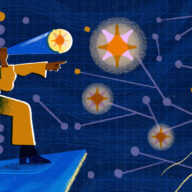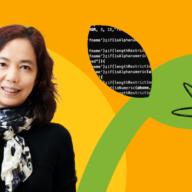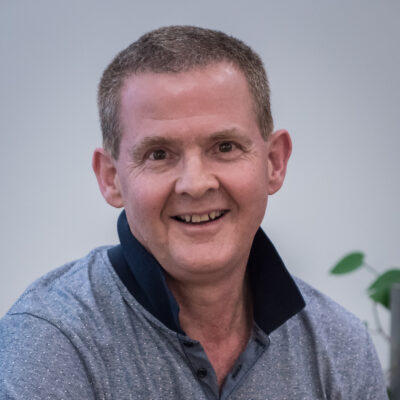In the Fortune 500 alone, teams lose an average of 50 million hours per year to inefficient collaboration. Our State of Teams report explored how teams can level up their collaboration and spend more time doing crucial work.
Our research also surveyed 100 nonprofit employees, revealing some enlightening truths about social impact teams. Compared to their private-sector counterparts, prioritization and flexible ways of working play a huge role in helping nonprofits build adaptability.
We found that:
- Nonprofit teams are 8.7 times more likely to be adaptable when they have processes in place to identify their top-priority work (almost 2 times what we found from our general team sample).
- Nonprofit teams are 6.5 times more likely to be adaptable when they control their workdays and innovate on how their time is spent.
And adaptability isn’t just a buzzword; it’s potentially more important for social impact organizations than those in the private sector, because it means continued impact for the populations they serve.
Jared Chung, Founder and Executive Director of CareerVillage, is intimately familiar with building adaptability through innovating processes and prioritization. CareerVillage is a technology nonprofit that crowdsources career advice for youth from an online volunteer corps of thousands of working professionals.
As Atlassian’s Head of Foundation, I am passionate about unleashing the potential of social impact teams, particularly those changing lives through education. I met with Jared over Zoom to unpack the concrete strategies he’s used to cultivate flexibility, resilience, and adaptability as he built his organization from the ground up in a uniquely dynamic, challenging, and meaningful industry.
The complexity of the nonprofit world demands adaptability
“Nonprofits work in a much more complex environment than traditional businesses,” Jared points out. “We’re not just creating a value proposition that addresses customer needs – we’re dealing with social challenges and issues as we help beneficiaries effectively navigate the world.”
Adaptability isn’t optional to excel in this kind of complex, holistic, high-stakes work. In my own work leading the Atlassian Foundation over the last eight years, I’ve had a front-row seat to many nonprofit teams remaining highly dynamic and innovative throughout volatile times – and CareerVillage is one of them. “Organizations that successfully navigate that complexity are the ones investing time in being intentional about how they work, about developing skills and processes that leverage all the competencies and backgrounds on their teams,” Jared says. He’s exemplified the kind of consistent effort and dedication it takes.
Based on the 13 years he’s spent growing CareerVillage, Jared shares four ways nonprofits can use prioritization and innovation to build more adaptable, resilient ways of working that have helped his team better serve their beneficiaries and missions.
4 principles of nonprofit resilience
1. Find a North Star to guide your priorities
According to Jared, prioritization – that is, identifying or ranking the most important work to be done in service of your mission – is easy. Maintaining that focus is the hard part. “Anyone can sit down with a list of goals and prioritize it,” he says. “What’s extremely difficult is to keep it up, to keep going so you don’t just prioritize once and then not question that work for six months.”
Instead, nonprofits need to continually revisit their priorities. To prompt and guide this constant re-evaluation, organizations need a North Star. For Jared, that’s his beneficiaries – the people who turn to CareerVillage.org for guidance on determining their professional path. “In moments of soul-searching, we’ve found it helpful to go to the people and communities we serve and try to follow their lead,” he shares.
But he stresses that while beneficiaries may be a natural choice as a North Star, they’re not the only possible guiding factor. Depending on the nature of their work, organizations might pivot based on policy changes or emerging academic research.
In practice, that looks like taking an action-oriented approach and iterating constantly. “You can adapt your way to ‘right,’” Jared says. Once OKRs are determined, Jared encourages his team to re-evaluate them regularly.
The Atlassian Playbook
At CareerVillage, Jared has used the Atlassian Playbook’s premortem and retrospective plays as part of his practice of ongoing iteration.
The Ways of Working Guide for social impact teams shares many of these plays and practices in an easily digestible form for nonprofits to tap into.
Download the guide for more free teamwork resources.
2. Commit to your mission; stay flexible on execution
As long as an organization stays focused on its mission, specific tasks and projects will naturally evolve, as well as the routines and processes that shape its work. That’s why Jared emphasizes accountability to outcomes, not to a specific roadmap or plan.
“Sometimes you face a moment when your organization has to make a bet, or try something that’s really new and out there,” explains Jared. In 2023, CareerVillage embarked on one such project – building an Al-powered career coach chatbot. “As large language models started to come up in prominence, we decided to assess how we could be using it with beneficiaries,” he says. “It’s become a major offering, and a game-changer for the communities we serve.”
Along with project evolution, an organization’s practices and processes will necessarily change to best serve its mission. “There was a clear point where CareerVillage transitioned from decisions being made collectively, with everyone in the room, to a management team that’s explicitly identified,” Jared explains. “There are many routines that were normal for us, like a Monday standup, that we don’t do anymore.”
3. Invest in your people
The private sector is generally unafraid of investing in human capital, and Jared thinks nonprofits can learn from that approach. A few strategies he recommends are:
- Leadership executive coaching: “In my experience, leadership coaching can be a strong predictor of whether the org can be adaptable to better serve its communities.”
- Empower teams to design their own working style: Constant re-prioritization can be tiring. Jared recommends giving teams the support and autonomy to build a sustainable working style that supports the mission. Remember: when teams are in control of how they spend their time, they’re more likely to be adaptable.
- Tap into the team’s diverse professional backgrounds: “Often, our team members’ prior work experience is much more diverse than you’d find in the private sector,” says Jared. To capitalize on it, organizations should make goals and processes extra explicit, then actively call on everyone’s diverse perspectives during decision-making, planning, and prioritization.
- Recognize what works for your team: “At CareerVillage, we’ve borrowed the OKR approach from the private sector, to ensure we’re documenting our goals and keeping track of progress,” Jared shares. To stay adaptable, the key is to keep reprioritizing and updating milestones as needed. At CareerVillage, Jared’s team actively celebrates in all-team meetings when team members take the initiative to update one of their goals.
4. Communicate and collaborate with other nonprofits
In the nonprofit sector, competition doesn’t exist in the same way as in the business world. “Nonprofit missions may have overlap, but there’s typically a level of uniqueness to organizations focused on social outcomes,” Jared says.
Even if a nonprofit’s mission is unique, many others in the space are facing the same challenges. To avoid reinventing the wheel, Jared’s solution is simple: talk to each other.
“Nonprofits should take every opportunity to compare notes,” he says. “Be specific; show each other how you’re getting things done on a week-by-week, day-by-day basis. You want to see what it looks like for other organizations to put their missions into practice.”
Compare notes with other nonprofits in the Atlassian Community’s Nonprofit & Social Impact group!
When nonprofits learn from each other, Jared has seen elevated outcomes and strategy across the board. “Surround yourself with people who are open to their organization being bold, and it’ll be easier to be bold yourself,” he shares. “You’ve got to be uncomfortable first. You must be willing to be a vulnerable leader; to be bold in front of others, in front of your team.”
CareerVillage is an Atlassian Foundation partner. Their coaching is always free – learn more or sign up for advice from over 130k professionals at companies including Nike, Apple, Disney, and Google.
Special thanks to Genevieve Michaels for her contributions to this article.












































